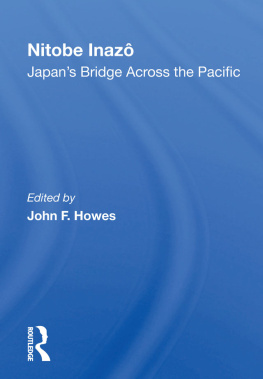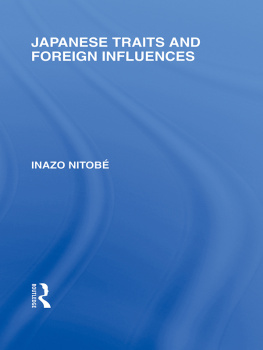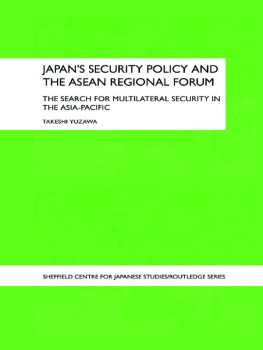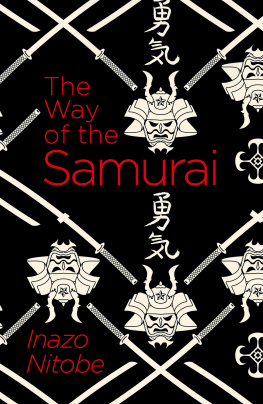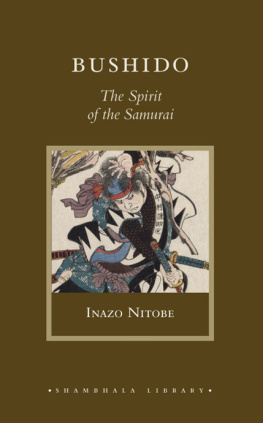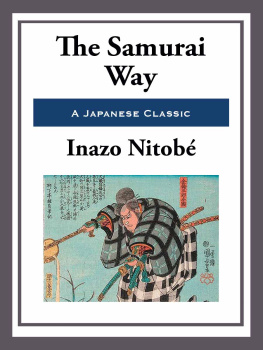Nitobe Inaz Japan's Bridge Across the Pacific

Nitobe Inaz and his wife, Mary, dressed up to go to the Imperial Palace on New Year's Day, 1916, their twenty-fifth wedding anniversary.
Nitobe Inaz
Japan's Bridge Across the Pacific
EDITED BY John F. Howes

First published 1995 by Westview Press, Inc.
Published 2021 by Routledge 605 Third Avenue, New York, NY 10017 2 Park Square, Milton Park, Abingdon, Oxon OX14 4RN
Routledge is an imprint of the Taylor & Francis Group, an informa business
Copyright 1995 by Taylor & Francis
All rights reserved. No part of this book may be reprinted or reproduced or utilised in any form or by any electronic, mechanical, or other means, now known or hereafter invented, including photocopying and recording, or in any information storage or retrieval system, without permission in writing from the publishers.
Notice: Product or corporate names may be trademarks or registered trademarks, and are used only for identification and explanation without intent to infringe.
A CIP catalog record for this book is available from the Library of Congress. ISBN 0-8133-8924-0
ISBN 13: 978-0-3671-6722-6 (pbk) ISBN 13: 978-0-3670-1735-4 (hbk)
DOI: 10.4324/9780429047213
To the memories of Matsumoto Shigeharu Takagi Yasaka Yanaihara Tadao who implemented Nitobe's vision
Contents
, Mark W. Fruin
1 Who Was Nitobe?, John F. Howes and George Oshiro
PART TWO Maturation
2 Roots, John F. Howes
3 Graduate Student and Quaker, Furuya Jun
PART THREE Cultural Identity
4 Japan Watchers 1903-1931, A. Hamish Ion
5 Bushido: Its Admirers and Critics, Cyril H. Powles
6 Philippine Bushido, Grant K. Goodman
7 Toward Remaking Manliness, Donald Roden
PART FOUR Japan in the World
8 Colonial Theories and Practices in Prewar Japan, Miwa Kimitada
9 The Geneva Spirit, Thomas W. Burkman
PART FIVE Evaluation
10 Journalism: The Last Bridge, Sat Masahiro
11 Mediation Between Cultures, Yuzo Ota
12 The End: 1929-1933, George Oshiro
13 Darkened Lanterns in a Distant Garden, Richard Eldridge Copley
14 Conclusion, John F. Howes
- 1 Who Was Nitobe?
- PART TWO Maturation
- 2 Roots
- 3 Graduate Student and Quaker
- PART THREE Cultural Identity
- 4 Japan Watchers 1903-1931
- 5 Bushido: Its Admirers and Critics
- 6 Philippine Bushido
- 7 Toward Remaking Manliness
- PART FOUR Japan in the World
- 8 Colonial Theories and Practices in Prewar Japan
- 9 The Geneva Spirit
- PART FIVE Evaluation
- 10 Journalism: The Last Bridge
- 11 Mediation Between Cultures
- 12 The End: 1929-1933
- 13 Darkened Lanterns in a Distant Garden
- 14 Conclusion
Guide
Foreword Page
The chapters in this volume were prepared for and presented at the Nitobe-Ohira Memorial Conference held at the University of British Columbia, May 23-25,1984. The conference was named in part to honor Prime Minister Masayoshi hira (1910-1980), whose last public appearances abroad took place in Vancouver. He died suddenly and unexpectedly a few days later in Japan. The Japanese government through the Japan Foundation had given generously to the promotion of Japan Studies in Canada during the tenures of Prime Ministers Tanaka Kakuei, Nakasone Yasuhira, and hira himself. Some of the monies from this hira Commemorative Program provided generous funding for the conference.
The conference consisted of fourteen panels with over 160 participants. Topics, all of which dealt with Japan, varied as widely as theater, linguistics, literature, trade, investment, politics, and modern historyas represented in this volume. Activities took place in the Asian Centre adjacent to the Nitobe Memorial Garden.
In the years since the conference, the activities of the institute have continued to develop. In 1992, the Institute of Asian Research was expanded to include five regional centers for research on Japan, China, Korea, Southeast, and South Asia, and in 1993 the Canada Asia Pacific Research Initiative (CAPRI), a public policy research program was launched. In 1996, the Institute will move to a new 30,000-square-foot building of its own adjacent to the present Asian Center and Nitobe Memorial Gardens. In the meantime, faculty concerned with Japan and the emerging Asia-Pacific Century continue to be hired with five new faculty positions in the Institute of Asian Research.
These activities represent an historical continuum which would have pleased both Nitobe Inaz (1862-1933) and hira. hira was known for his particular interest in international relations. One of the most persistent rumors in Tokyo about how Nitobe's face was chosen to adorn the new 5000 note attributes the decision to hira. Nitobe, who died a few miles from Vancouver in nearby Victoria, would also have been pleased. At the time of his death, he was probably the most famous Japanese outside Japan. Those responsible for the foundation of Asian Studies in the University of British Columbia, both before and immediately after World War II, included a number of his close friends. They sponsored the building of the Nitobe Memorial Garden in his honor. The details that undergird the relationship between Nitobe and North America, commemorated in the Garden, unfold in the pages that follow.
Mark W. Fruin
Director, Institute of Asian Research
University of British Columbia
Preface Page
In the world of the Quakers, which Nitobe Inazo joined as a young man, the alternate to the use of force to solve disputes is what the Quakers call "friendly persuasion." By that they reflect a quiet confidence in the basic rationality of individuals whose better nature will respond to quiet and well-meaning logic presented in the understanding that all people are children of God.
Nitobe Inaz resorted to quiet verbal persuasion aided by his impressive ability at language, humor, knowledge and broad human understanding. In the following pages, we read of only one instance where he used force of any kind. At this time his Japanese rickshaw puller abused an innocent Korean on the street in Seoul when Korea was under Japanese control before World War II. Nitobe tells us that he thereupon gave the rickshaw man a "good thrashing," because he "did not know that a patriot loves his country so well that he would not countenance any act which might reflect on the good name of his own people" (see p. ). It would appear that in this instance Nitobe felt that the rickshaw man could not be approached through quiet rhetoric or that his action toward the Korean put him beyond the pale of reasoned discussion.
Rather than with bombast or warlike rhetoric of any kind, those who knew Nitobe associated him with the ability to listen closely to what others said and the regular retreat to common ground when matters moved to a point where violence might result. These qualities served him well in a career devoted to the development of harmony between individuals and nations, but they made him no match for the Japanese Army intent on control of the portions of Asia adjacent to Japan. Their moves in this direction developed into World War II in the Pacific.



